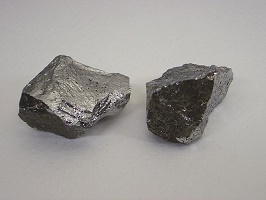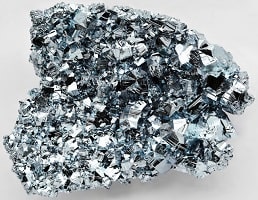We elaborate the uses of Bromine and atomic properties with characteristics. Bromine is a gaseous or liquid chemical element, metallic reddish brown with atomic number 35. Its symbol is Br and it belongs to the group of halogens and its habitual state in nature is liquid. Bromine is located at position 35 on the periodic table.
You Can Visit Our Managed: Periodic Table Main Page
On this page you will discover the chemical properties of bromine and information about bromine and other elements on the periodic table such as chlorine, iodine, selenium or krypton. You will also learn what bromine is for and you will learn what its uses are through its properties associated with bromine such as its atomic number or the usual state in which bromine can be found.
You will be able to see qualities of bromine such as its melting and boiling point, its magnetic properties or what its chemical symbol is. In addition, here you will find information about its atomic properties such as the distribution of electrons in bromine atoms and other properties.
For some elements some of this information is unknown. In these cases we show the properties attributed to them.
Properties of bromine
Los elementos del grupo de los halógenos como el bromo se presentan como moléculas diatómicas químicamente activas. El nombre halógeno, proviene del griego y su significado es “formador de sales”. Son elementos halógenos entre los que se encuentra el bromo, son oxidantes. Muchos compuestos sintéticos orgánicos y algunos compuestos orgánicos naturales, contienen elementos halógenos como el bromo. A este tipo de compuestos se los conoce como compuestos halogenados.
The bromine state in its natural form is liquid, highly mobile and volatile. Bromine is a gaseous or liquid chemical element, metallic reddish brown and belongs to the group of halogens. The atomic number of bromine is 35. The chemical symbol for bromine is Br. The melting point of bromine is 265.8 degrees Kelvin or -6.35 degrees Celsius or degrees Celsius. The boiling point of bromine is 332 degrees Kelvin or 59.85 degrees Celsius or degrees Celsius.
Uses of bromine
Bromine is a chemical element that belongs to the group of halogens. Elemental bromine is a reddish brown liquid at room temperature that emits vapors that are corrosive and toxic. Liquid bromine does not occur naturally but appears as a colorless, crystalline substance. If you’ve ever wondered what bromine is for , here is a list of its possible uses:
- The greatest use of bromine is in the creation of flame retardants. When the substance burns, the bromine isolates the fire from the oxygen, causing it to go out.
- Bromide compounds, in particular potassium bromide , are used in medical circles as anticonvulsants. Veterinarians are also used. Most countries seriously limit the use and availability of bromine salts for human use due to the fact that they cause neurological dysfunction.
- Brominated substances are important ingredients in many over-the-counter and prescription medications, such as pain relievers, sedatives, and antihistamines. In fact, bromine compounds are the active ingredients in various medications that treat pneumonia and cocaine addiction. Currently, drugs containing various bromine compounds are in trials for the treatment of Alzheimer’s disease and the new generations of the fight against cancer and AIDS drugs.
- Bromide from calcium , sodium, and zinc is used to create special solutions for salt drilling.
- Bromine is used to create brominated vegetable oils that are used as an emulsifier in some brands of soft drinks.
- It is often used in pool maintenance, particularly in thermal baths.
- It is used in the purification of industrial waters, disinfectants and insecticides.
- Bromine is used to reduce mercury contamination from coal power plants. This can be accomplished either by treating activated carbon with bromine or by injecting bromine compounds over the coal prior to burning.
- It is also used to create different color dyes in the textile industry.
- Electric car batteries are also being tested to help electric cars produce zero emissions.
- Ethylene bromine has been used as an additive to gasoline, just as lead prevents engine degradation. The combination of lead and bromine is highly polluting and is expelled from the engine through the exhaust pipe. This use of bromine has declined since the 1970s due to environmental concerns.
- Bromine methyl is used as a highly toxic pesticide to fumigate soil and housing using the tent method. It is no longer used in this way as it is an ozone-depleting substance and has been replaced by other less harmful chemicals.
Atomic properties of bromine
The atomic mass of an element is determined by the total mass of neutrons and protons that can be found in a single atom belonging to this element. As for the position where to find the bromine within the periodic table of the elements, the bromine is in group 17 and period 4. The bromine has an atomic mass of 79,904 u.
The electronic configuration for bromine is [Ar] 3d104s24p5. The electronic configuration of the elements, determines the form in which the electrons are structured in the atoms of an element. The average radius for bromine is 115 pm, its atomic radius or Bohr radius is 94 pm, its covalent radius is 114 pm, and its Van der Waals radius is 185 pm. Bromine has a total of 35 electrons whose distribution is as follows: In the first layer it has 2 electrons, in the second it has 8 electrons, in its third layer it has 18 electrons and in the fourth one, 7 electrons.
You Can Visit Our Managed: Periodic Table Main Page
Characteristics of bromine
Below you can see a table where the main characteristics of bromine are shown.
| Bromine | ||
|---|---|---|
| Chemical symbol | Br | |
| Atomic number | 35 | |
| Group | 17 | |
| Period | 4 | |
| Appearance | gaseous or liquid, metallic reddish brown | |
| Block | p | |
| Density | 3119 kg / m3 | |
| Atomic mass | 79,904 u | |
| Average radius | 115 pm | |
| Atomic radio | 94 | |
| Covalent radius | 114 pm | |
| Van der Waals radio | 185 pm | |
| Electronic configuration | [Ar] 3d104s24p5 | |
| Electrons per layer | 2, 8, 18, 7 | |
| Oxidation states | ‘-1 most common’, +1, 5 | |
| Oxide | strong acid | |
| Crystal structure | orthorhombic | |
| State | liquid | |
| Melting point | 265.8 K | |
| Boiling point | 332 K | |
| Heat of fusion | 5,286 kJ / mol | |
| Vapor pressure | 5800 Pa at 6.85 ° C | |
| Electronegativity | 2.96 | |
| Specific heat | 480 J / (K · kg) | |
| Thermal conductivity | 0.122 W / (Km) | |
You Can Visit Our Managed: Periodic Table Main Page




